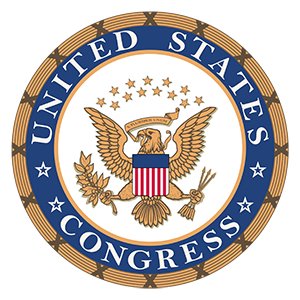
Congress Passes $900 Billion COVID Stimulus Package While Trump Calls for $2,000 in Direct Payments
December 23, 2020
Both the House of Representatives and the Senate passed on Monday a more than $900 billion COVID-19 stimulus package. The long-awaited and much needed assistance comes after months of protracted wrangling between the parties.
As of this writing, President Trump did not say he would veto the bill but he asked Congress to amend it before sending it to his desk for signature.
“I am asking Congress to amend this bill and increase the ridiculously low $600 to $2000, or $4000 for a couple,” he said. He also said that the bill failed to provide adequate assistance to small businesses, such as restaurants.
The 5,593 page Consolidate Appropriations Act of 2021 contains the stimulus legislation as well a year-long $1.4 trillion government funding bill with a dozen annual appropriations bills. The combined measure has drawn ire from a number of conservatives and liberals who are critical of both the process and substance. Lawmakers received the massive bill only shortly before the vote.
House Speaker Nancy Pelosi (D-CA) responded to the President saying that the House could potentially try to pass additional legislation to modify the $600 references in the current bill. However, that would require further action by Congress, creating complications of its own.
Key COVID provisions include:
- Direct Stimulus Checks ($166 billion). Individuals making up to $75,000 a year will receive a payment of $600. Couples making up to $150,000 will receive $1,200, in addition to $600 per child. Treasury Secretary Steven Mnuchin said Monday that the checks could go out as soon as next week.
- Enhanced Unemployment Benefits ($120 billion). Jobless workers will get an extra $300 per week in federal unemployment payments through March 14. Utah’s Department of Workforce Services says it will have to wait until they receive guidance from the U.S. Department of Labor before the extra payments can be made.
- Vaccines, Testing, Tracing, Healthcare ($60+ billion). Funding is provided to purchase and distribute COVID-19 vaccines, help states conduct testing and boost federal research, including $22 billion for testing and tracing, $20 billion for vaccine procurement, $9 billion for vaccine distribution, $3 billion for the strategic national stockpile, more than $1 billion for NIH research on COVID-19 and $3 billion for healthcare provider and hospital grants.
- Paycheck Protection Program ($284 billion). PPP loans will receive a fresh infusion of nearly $300 billion with an allocation of $20 billion for Emergency Injury Disaster Loans. The new PPP round contains several important changes:
- Allows previous PPP recipients to apply for another loan of up to $2 million if they meet certain requirements – i.e. have 300 or fewer employees; have used or will use the full amount of their first PPP loan; and can demonstrate a 25% gross revenue decline in any 2020 quarter compared with the same quarter in 2019.
- Expands allowable expenditures covered by a PPP loan, including PPE and facility modifications.
- To be eligible for full loan forgiveness, PPP borrowers will still have to spend no less than 60% of the funds on payroll over a covered period of either eight or 24 weeks.
- Creates a simplified forgiveness application process for loans of $150,000 or less. Specifically, a borrower shall receive forgiveness if a borrower signs and submits to the lender a certification that is not more than one page in length, includes a description of the number of employees the borrower was able to retain because of the loan, the estimated total amount of the loan spent on payroll costs, and the total loan amount. The SBA must create the simplified application form within 24 days of the bill’s enactment.
- Repeals the requirement that PPP borrowers deduct the amount of any EIDL advance from their PPP forgiveness amount.
- Specifies that business expenses paid with forgiven PPP loans are tax-deductible. This overturns previous IRS guidance that such expenses could not be deducted. Applies to previous PPP loans as well as new loans.
- Reduces maximum loan amount from $10 million to $2 million.
- Makes other changes to expand eligibility to other groups.
- Rental Aid. $25 billion in emergency rental aid and an extension of the national eviction moratorium through Jan. 31, 2021.
- Colleges and Schools. $82 billion in funding for colleges and schools, including virus transmission mitigation.
- Employee Retention Tax Credit/Business Meals. The retention credit is extended and until the end of 2022 provides a 100% business expense deduction for restaurant meals.
For further analysis visit the summary of Salt Lake City accounting firm WSRP.
Other provisions of the legislation protect patients from surprise billing, a bipartisan priority for some time, and a national campaign to increase awareness and knowledge of the safety and effectiveness of vaccines.
What’s not included are two controversial provisions – dollars for state and local governments and liability protection. Democrats have pushed for the former while while Republicans have insisted on the latter.
Senate Leader McConnell and House Speaker Pelosi have both said additional relief is likely to be considered again next year with a Biden Administration.